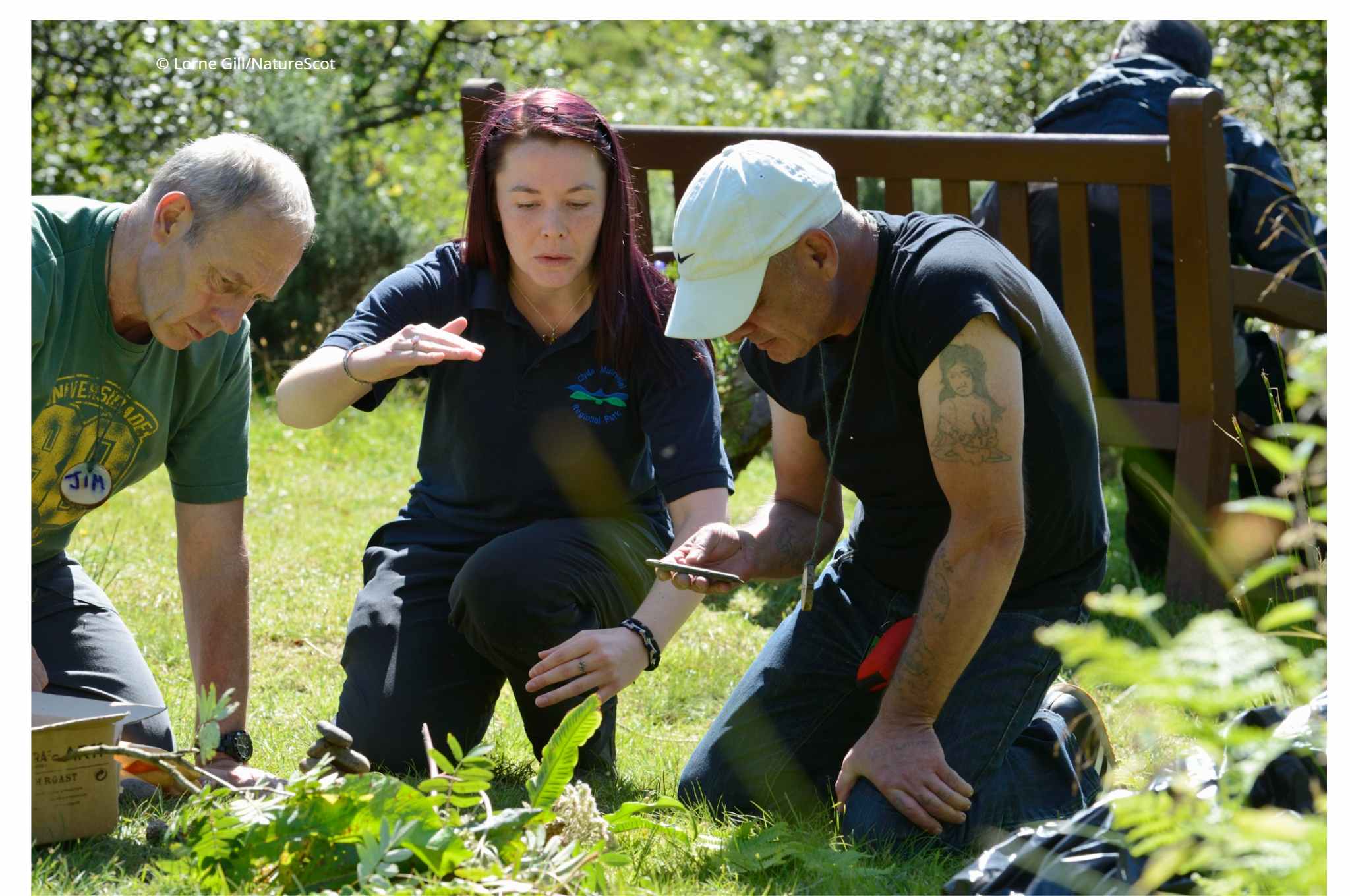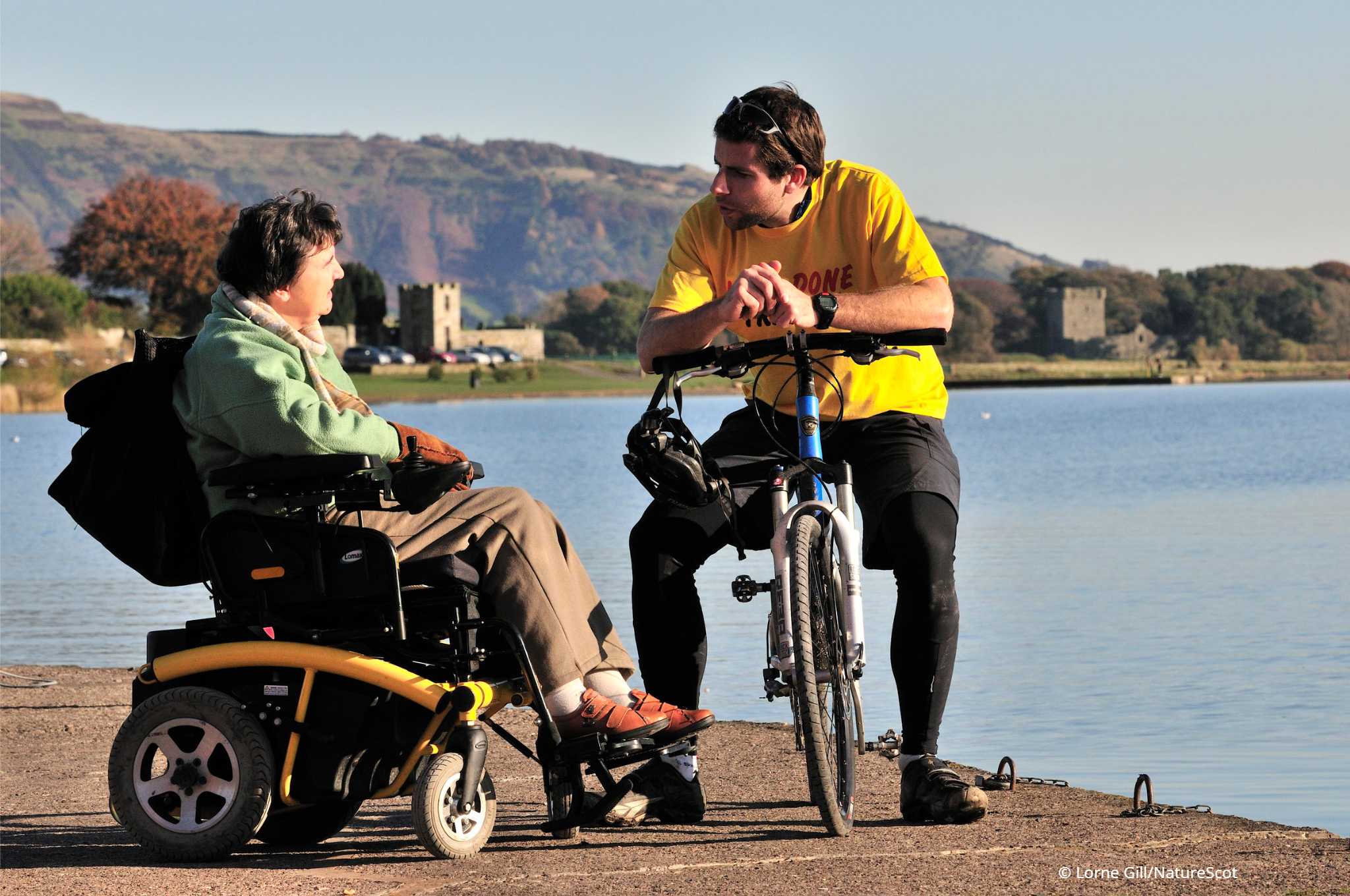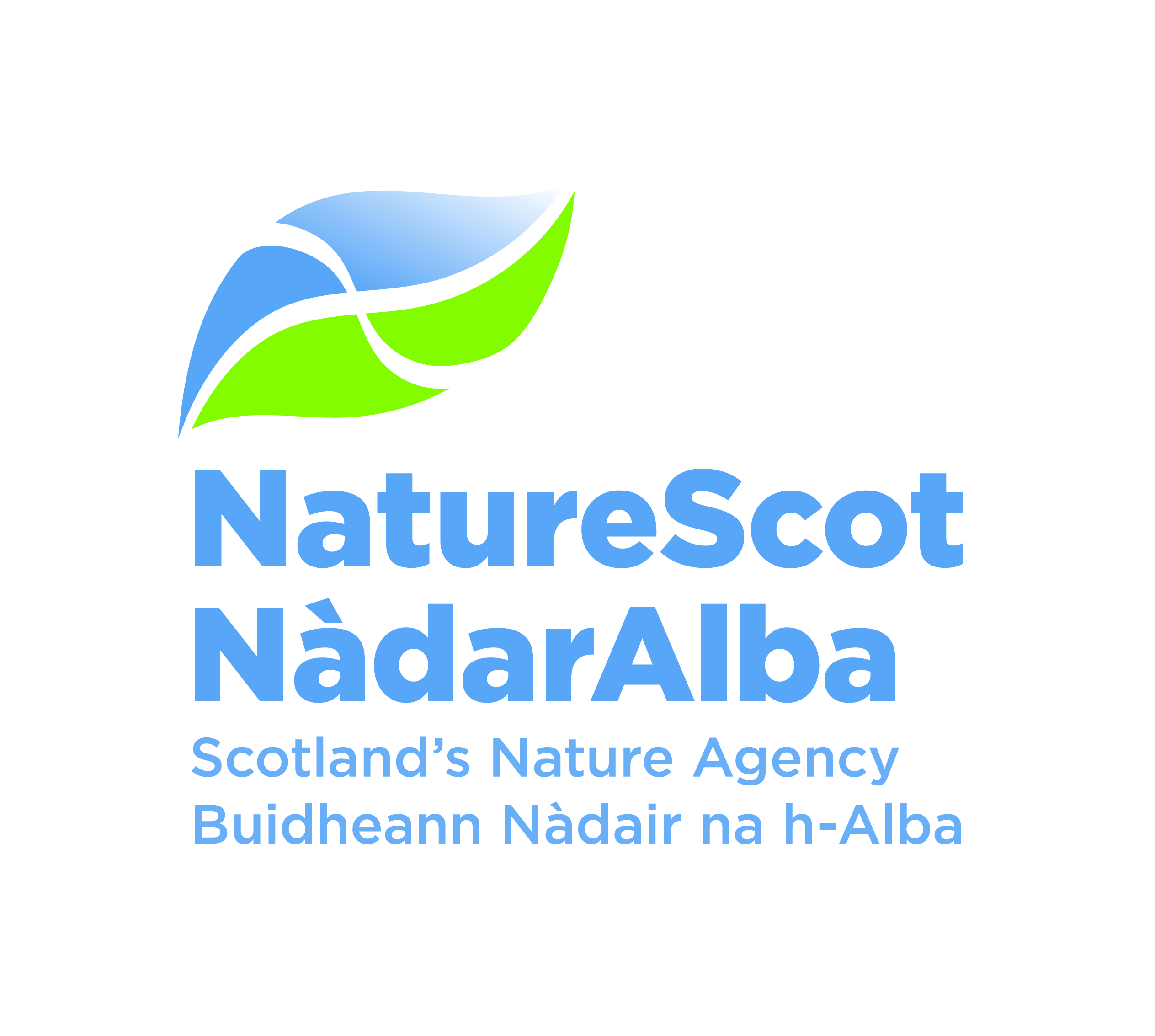Case Study
Nature heals – promoting ‘Green Health Parthernships’ in Scotland
Contact name
Peter Rawcliffe
Institution name
NatureScot
Region & country
Scotland
Summary
The Our Natural Health Service (ONHS) programme, initiated by NatureScot (formerly known as Scottish Natural Heritage) aims to increase awareness across sectors and among the public of how greater use of the outdoors can help sustain individuals’ health and happiness by providing connections to places, people and purpose. Green Health Partnerships bring together local stakeholders to demonstrate how better cross-sectoral co-ordination can mainstream approaches to improving health through engagement with the natural environment.

© Lorne Gill/NatureScot

© Lorne Gill/NatureScot
Background of the project
Despite Scotland’s vast, varied and accessible green spaces, parks and Protected Areas, and a robust set of national policies that recognise the value of the natural environment, this health-promoting resource has been under-utilised. There was limited linkage between the range of sectors working to encourage public engagement in outdoor activities such as walking, cycling, volunteering, outdoor learning and play. A minority of health practitioners prescribed or advised spending time in nature.
To help address the public health priorities of physical inactivity, poor mental health and health inequalities, the need for more partnership working between the health and environment sectors was identified as key. Traditionally, the environment sector has encouraged participation in outdoors activities, and promoted the health & wellbeing benefits. Identifying shared policy objectives and greater co-ordination across sectors is needed to realise the potential of Green Health.
Solution and actions taken
Large-scale Green Health Partnerships (GHPs) were established to bring together health, social care, environment, leisure, sport, and active travel interests, across state and third sectors, to make more use of local green space as a health-promoting resource. GHPs added value to existing work, and developed programmes to expand Green Health opportunities, raise awareness in the health sector and connect more people to nearby nature for prevention, treatment, recovery and long-term care.
NatureScot provided advice and support to four pilot Green Health Partnerships to increase the number of people having contact with nature and integrate the use of nature-based health interventions into health and social care delivery. Land managing bodies were encouraged to link with other GHP members to target people whose health would benefit most from spending time in nature. Information about the value of accessible green spaces and supportive projects was provided to healthcare staff.
Other institutions or parties involved
NatureScot worked with national partners from health, transport, forestry, education and sport. The local Green Health Partnerships involved cross-sectoral organisations from the state, voluntary, community and academic sectors; key partners were area health boards and local government.
Results
The four pilot Green Health Partnerships have been well received in their areas. They have stimulated more collaborative working and influenced policy development. An evaluation of their the first three years of operation demonstrated an expanded provision of green health opportunities in the GHP areas and an increased awareness of the potential contribution of nature to health has been achieved.
Challenges
Progress is being made in Scotland, but there are still challenges – for example the size and complexity of the national health service and the emphasis on bio-medical approaches to health. Achieving national cross-sector collaboration and funding for the pilot GHPs was difficult, and whilst the local GHPs have succeeded in obtaining project funding from a variety of sources they have struggled to obtain long-term core funding for staff.
Lessons learned
- A robust policy context for connecting public health & the natural environment is important, helping to increase understanding and make the case for resources
- Maximising health benefits means looking beyond parks & protected areas and helping people to connect with nature as a part of their daily lives. However, PS & PAs also have their part to play
- Local partnership working between health & environment sectors can help to link people & place
Other resources
- https://www.nature.scot/professional-advice/contributing-healthier-scotland/our-natural-health-service
- https://www.nature.scot/doc/our-natural-health-service-leaflet-april-2020
- https://www.nature.scot/professional-advice/contributing-healthier-scotland/our-natural-health-service/green-health-partnerships
- https://www.nature.scot/doc/green-health-partnerships-scotland-evaluation-first-three-years
